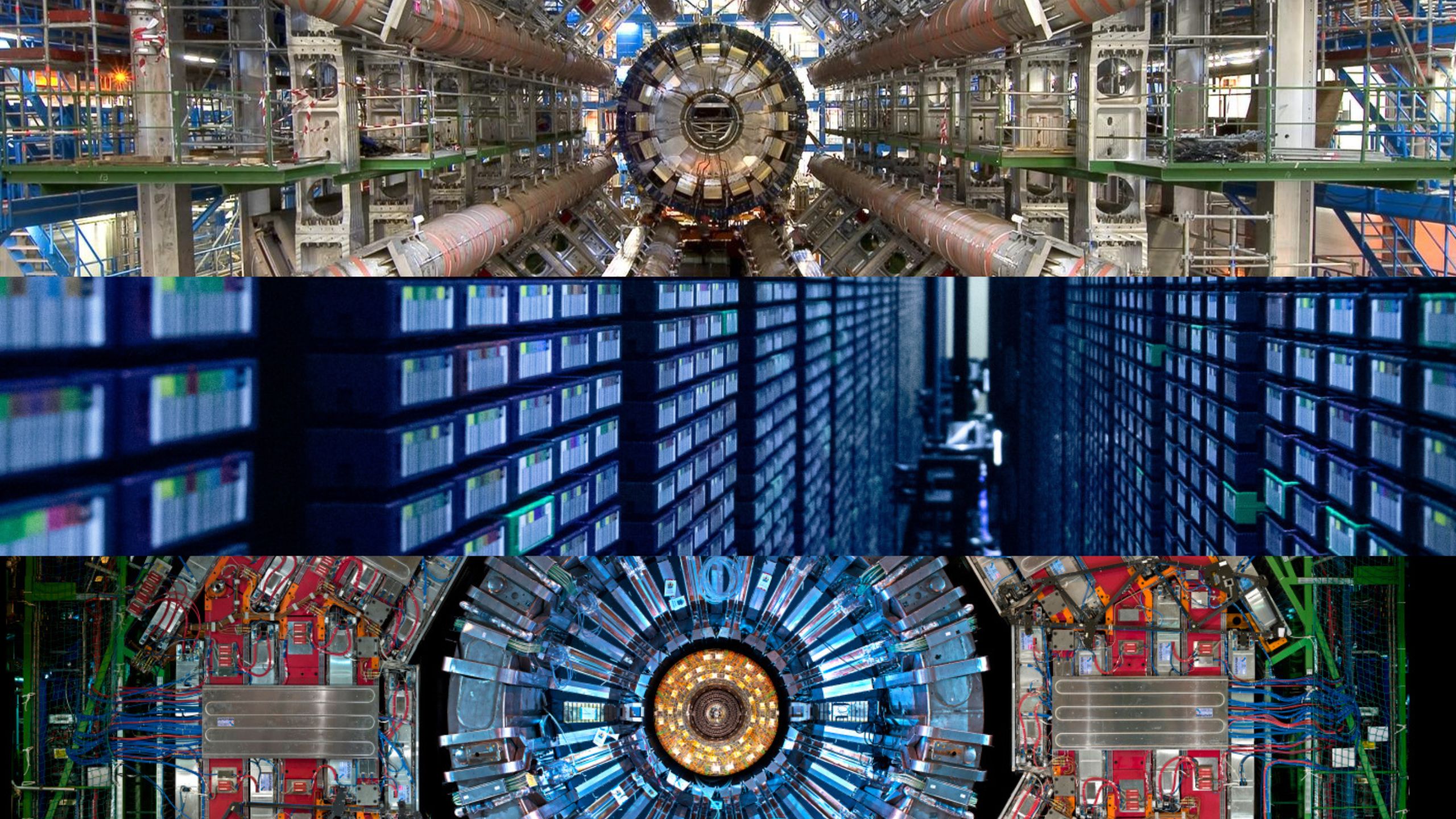The experiments at the Large Hadron Collider (LHC) require high-performance event-selection systems – known as “triggers” in particle physics – to filter the flow of data to manageable levels. The triggers pick events with distinguishing characteristics, such as interactions or collisions of particles recorded in particle detectors, and make them available for physics analyses. In just a few seconds, the complex system can determine whether the information about a given collision event is worth keeping or not.
The ATLAS and CMS experiments use triggers on two levels. The first trigger runs in sync with the rate of particle bunches colliding in the detectors, deciding in less than 10 microseconds which data to keep. Events that pass the first-level trigger move on to the second high-level trigger for further selection. The selected events are then sent to the CERN Data Centre, where the data is copied, stored and eventually made available to scientists around the world for data analysis.
In preparation for the High-Luminosity LHC (HL-LHC), the ATLAS and CMS detectors are being upgraded with finer spatial and timing granularity, which will result in more data for each collision. The principle is the same as taking a picture with a camera with more pixels: the resulting file will be bigger because the image contains more detail, and the picture will be of higher quality. To prepare for the data deluge expected when the LHC enters the high-luminosity era, scientists need to develop new strategies for more sophisticated event processing and selection.
The key objective of the five-year Next-Generation Triggers (NextGen) project is to get more physics information out of the HL-LHC data. The hope is to uncover as-yet-unseen phenomena by more efficiently selecting interesting physics events while rejecting background noise. Scientists will make use of neural network optimisation, quantum-inspired algorithms, high-performance computing and field-programmable gate array (FPGA) techniques to improve the theoretical modelling and optimise their tools in the search for ultra-rare events.
The foundations of the NextGen project were laid in 2022 when a group of private donors, including former Google CEO Eric Schmidt, visited CERN. This first inspiring visit eventually evolved into an agreement with the Eric and Wendy Schmidt Fund for Strategic Innovation, approved by the CERN Council in October 2023, to fund a project that would pave the way for the future trigger systems at the HL-LHC and beyond: NextGen was born.
NextGen will collaborate with experts in academia and industry. The work builds on the open-science and knowledge-sharing principles embedded in CERN's institutional governance and modus operandi. The project includes a work package dedicated to education and outreach, a unique multi-disciplinary training programme for NextGen researchers and targeted events and conferences for the wider community of scientists interested in the field. The intellectual property generated as part of the NextGen Triggers project, owned by CERN, will be released and shared under open licences in compliance with the CERN Open Science Policy.
The NextGen Triggers project will mark a new chapter in high-energy physics, leveraging upgraded event-selection systems and data-processing techniques to unlock a realm of discoveries.

